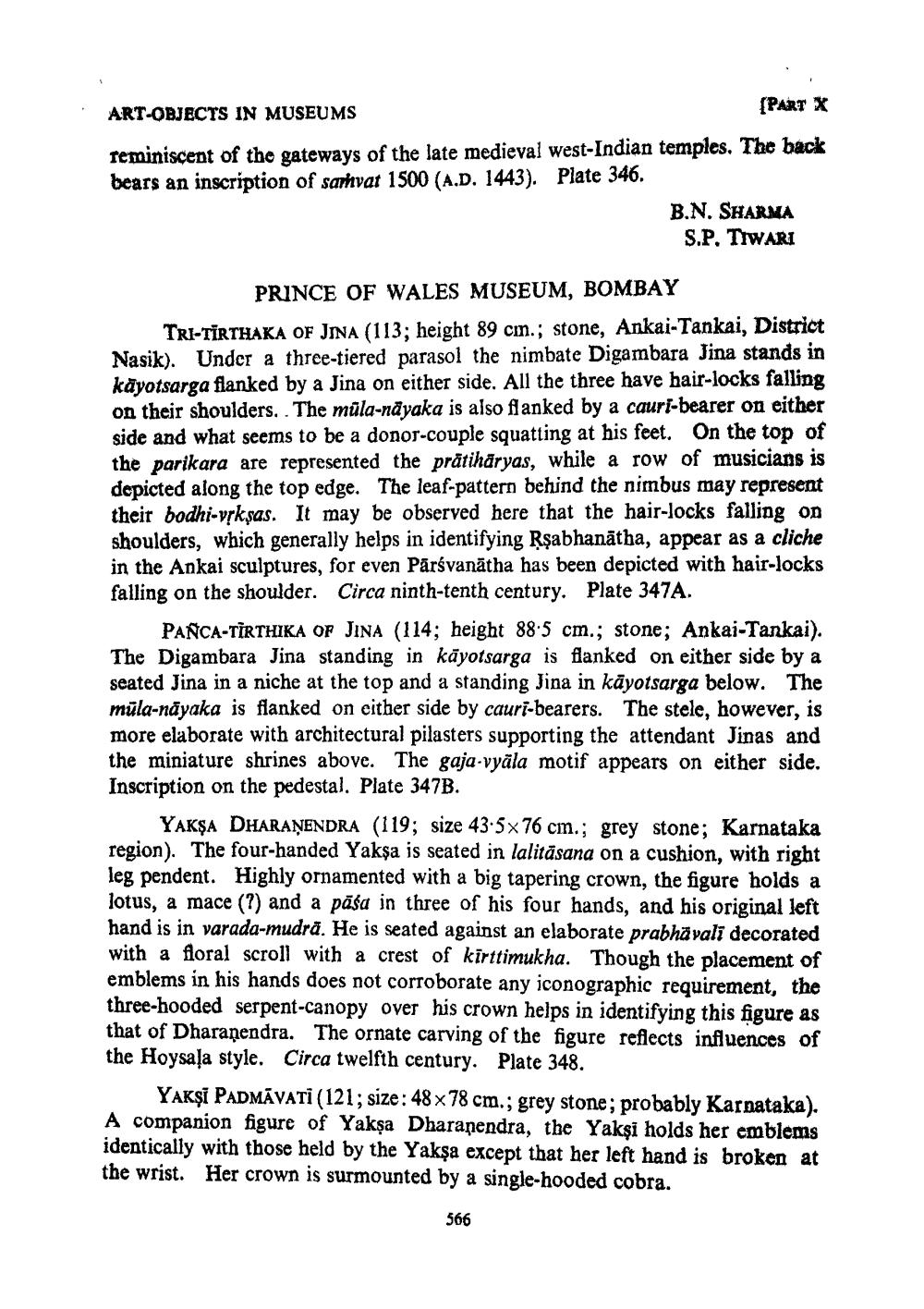________________
ART-OBJECTS IN MUSEUMS
(PART X
Teminiscent of the gateways of the late medieval west-Indian temples. The back bears an inscription of sarhvat 1500 (A.D. 1443). Plate 346.
B.N. SHARMA S.P. TIWARI
PRINCE OF WALES MUSEUM, BOMBAY TRI-TIRTHAKA OF JINA (113; height 89 cm.; stone, Ankai-Tankai, District Nasik). Under a three-tiered parasol the nimbate Digambara Jina stands in kayotsarga flanked by a Jina on either side. All the three have hair-locks falling on their shoulders. The müla-nayaka is also flanked by a cauri-bearer on either side and what seems to be a donor-couple squatting at his feet. On the top of the parikara are represented the prātihäryas, while a row of musicians is depicted along the top edge. The leaf-pattern behind the nimbus may represent their bodhi-vrkşas. It may be observed here that the hair-locks falling on shoulders, which generally helps in identifying Rşabhanātha, appear as a cliche in the Ankai sculptures, for even Pārsvanātha has been depicted with hair-locks falling on the shoulder. Circa ninth-tenth century. Plate 347A.
PANCA-TĪRTHIKA OF JINA (114; height 88.5 cm.; stone; Ankai-Tankai). The Digambara Jina standing in kāyotsarga is flanked on either side by a seated Jina in a niche at the top and a standing Jina in kāyotsarga below. The müla-nāyaka is flanked on either side by cauri-bearers. The stele, however, is more elaborate with architectural pilasters supporting the attendant Jinas and the miniature shrines above. The gaja-vyala motif appears on either side. Inscription on the pedestal. Plate 347B.
YAKSA DHARANENDRA (119; size 43.5 x 76 cm.; grey stone; Karnataka region). The four-handed Yaksa is seated in lalitāsana on a cushion, with right leg pendent. Highly ornamented with a big tapering crown, the figure holds a lotus, a mace (?) and a pāśa in three of his four hands, and his original left hand is in varada-mudra. He is seated against an elaborate prabhävalī decorated with a floral scroll with a crest of kīrttimukha. Though the placement of emblems in his hands does not corroborate any iconographic requirement, the three-hooded serpent-canopy over his crown helps in identifying this figure as that of Dharanendra. The ornate carving of the figure reflects influences of the Hoysala style. Circa twelfth century. Plate 348.
Yaksi PADMAVATI (121; size: 48 x 78 cm.; grey stone; probably Karnataka). A companion figure of Yaksa Dharanendra, the Yakşi holds her emblems identically with those held by the Yakşa except that her left hand is broken at the wrist. Her crown is surmounted by a single-hooded cobra.
566




